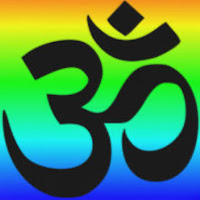1. superimposed on the ground of consciousness
This life force is but a shadow of the immortal source
like Saguna Brahman superimposed on the ground of consciousness.
There’s only one absolute light and one conditional shadow.
People are like dreams superimposed on that Shadow God.
2. consciousness cannot be divided
Contrary to popular opinion, consciousness cannot be divided.
Rivers are names and forms. Even the one sea has been given many names and forms.
But the hydrologic is the hydrologic. It doesn't matter what you call it.
3. undivided consciousness
Nondoing is
the highest wisdom of Maya,
the irresistible will of God,
and the greatest magic show
appearing in Nirguna Brahman.
Effortless nondoing is existence unbound.
Intuitive nonknowing is undivided consciousness.
Unconditional nonloving is loving whatever.
4. rebirth
Mixing color with death,
October is the kindest month.
Oak trees are turning gold today—
that is the peak of my geography.
October is great. November is sublime.
November is the rebirth of space in time.






